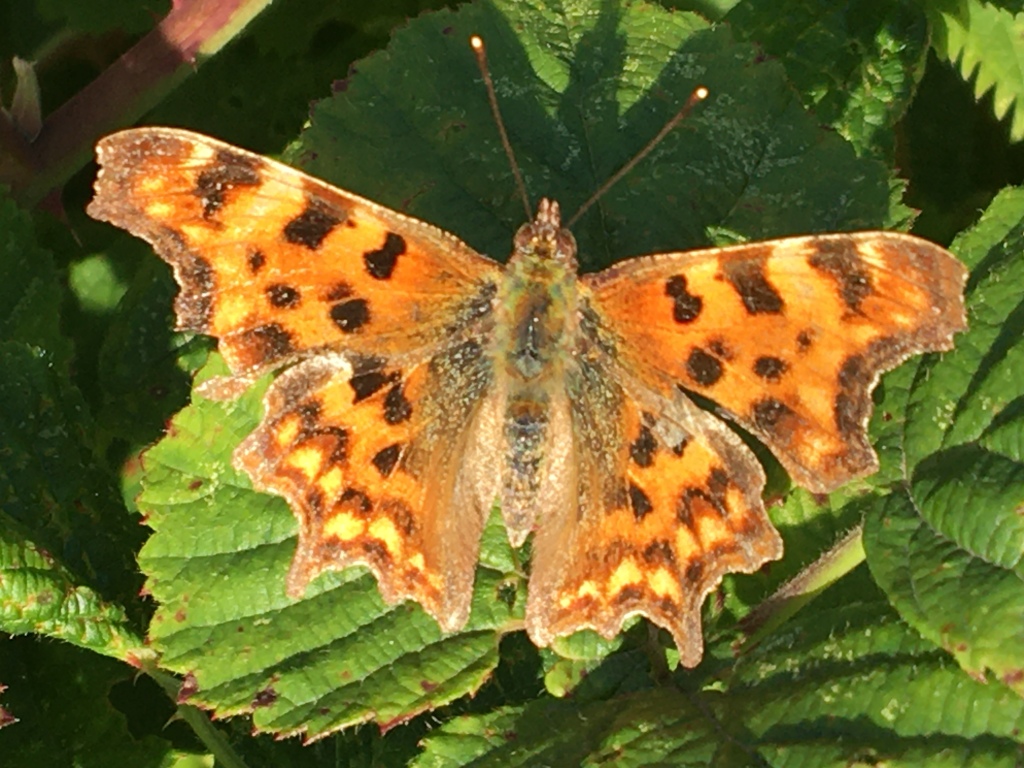
The Comma, Polygonia c-album, named after the comma shaped mark on its white underwings, is a very striking butterfly in appearance and can be found in large numbers at the right time of year on its favourite plants. They are orange and black with ragged looking wings which break up their outline and make them look just like dead leaves, which protects them from hungry birds when they hibernate.
It is a bit of a generalist in terms of habitat and can be found in all sorts of places; hedgerows, stands of thistles in fields, forest-rides and gardens are some of its favourite haunts.
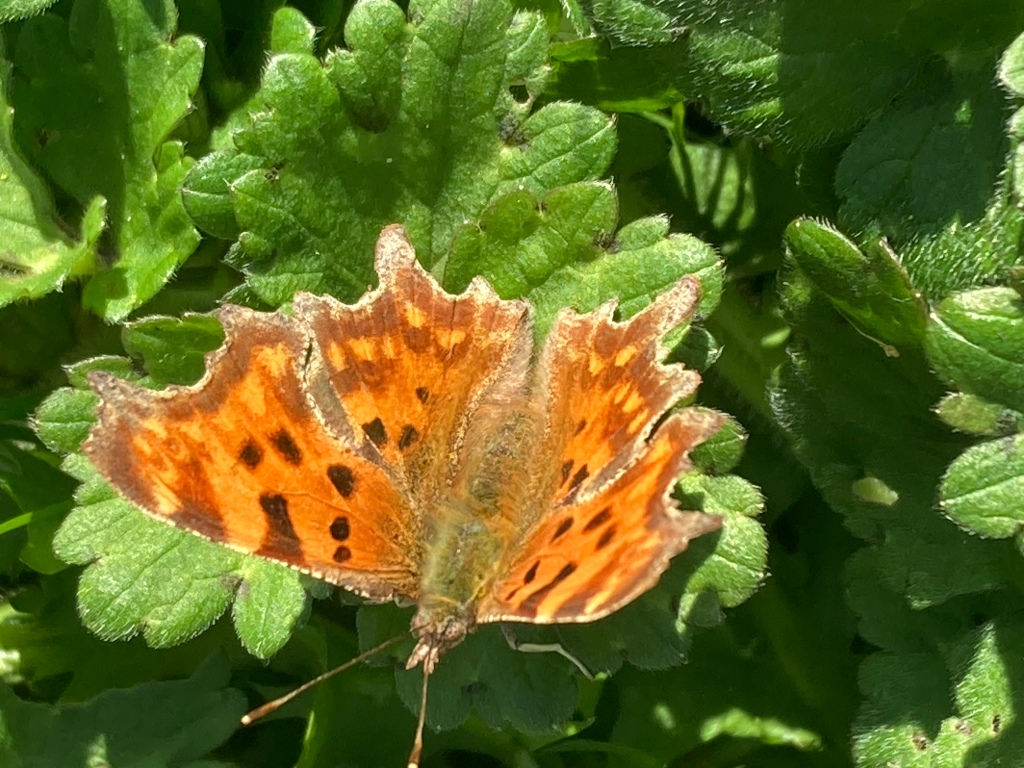
Behaviour
In spring overwintering adults wake from hibernation and spend time basking in sunny locations such as on drystone walls, tree-trunks, telegraph poles and fence-posts. The Male will establish a territory in such a place and will perch waiting for a female to enter its patch, regularly conducting short patrols flights to defend the area against rivals.
Throughout summer and early autumn, the adults, which are in their second generation, will range far and wide to find sites with ample nectar sources. Their favourite flowers are those of the Buddleia or ‘butterfly bush’, Bramble, Borage, Ivy, Cottoneaster, Privet and Thistle, they can be found on many other flowers though as they don’t seem to be too picky.
They have what is called a ‘bivoltine’ lifecycle, meaning they raise two broods in a year, the first generation is in flight from April to May, and the second generation from July to August, this can be joined by migrants from the continent in some years.
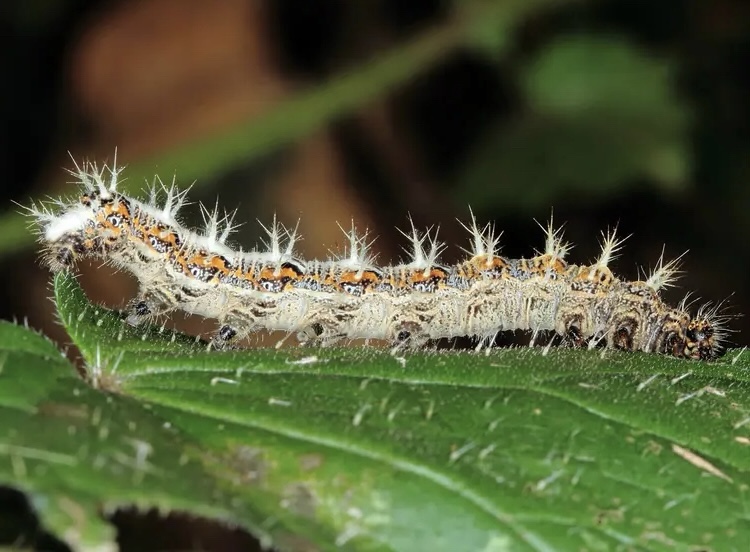
(Ben Sale)
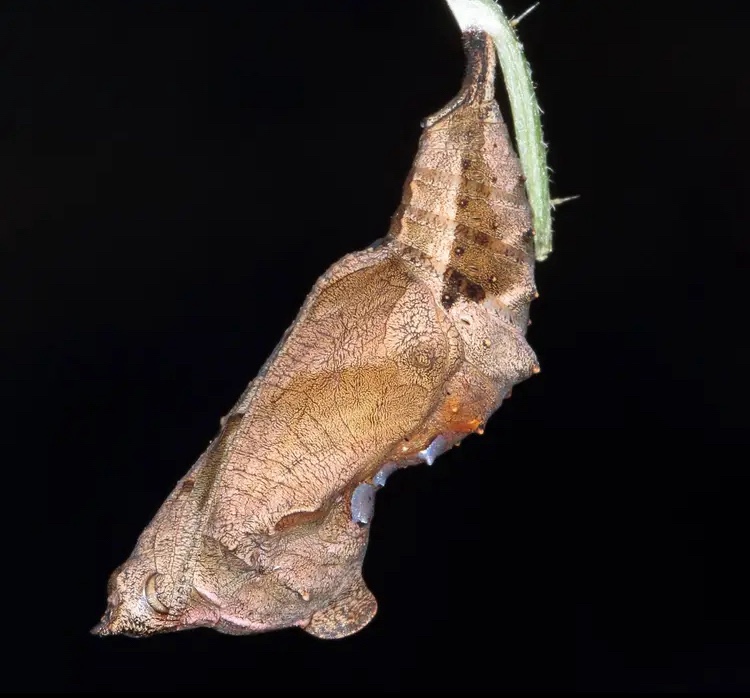
(Ben Sale)
Larvae and food plants
They lay their eggs singly, on the top-surface of leaves growing near the top of the plant towards the end of the leaf, and although they are not too fussy about their food when adults the larvae are very specialised.
Larval food plants are mainly nettles but occasionally the caterpillars can be found feeding on Redcurrant leaves, Willow trees and Hop plants. The caterpillars feed from May to August, starting on the underneath of leaves while they are small and vulnerable but switching to the upper surface later on.
They have a very ingenious camouflage, being white and brown so they look just like small bird droppings, the first generation pupates in May and the second in July with the pupae being suspended from dense silk pads on the foodplant or on neighbouring leaves.
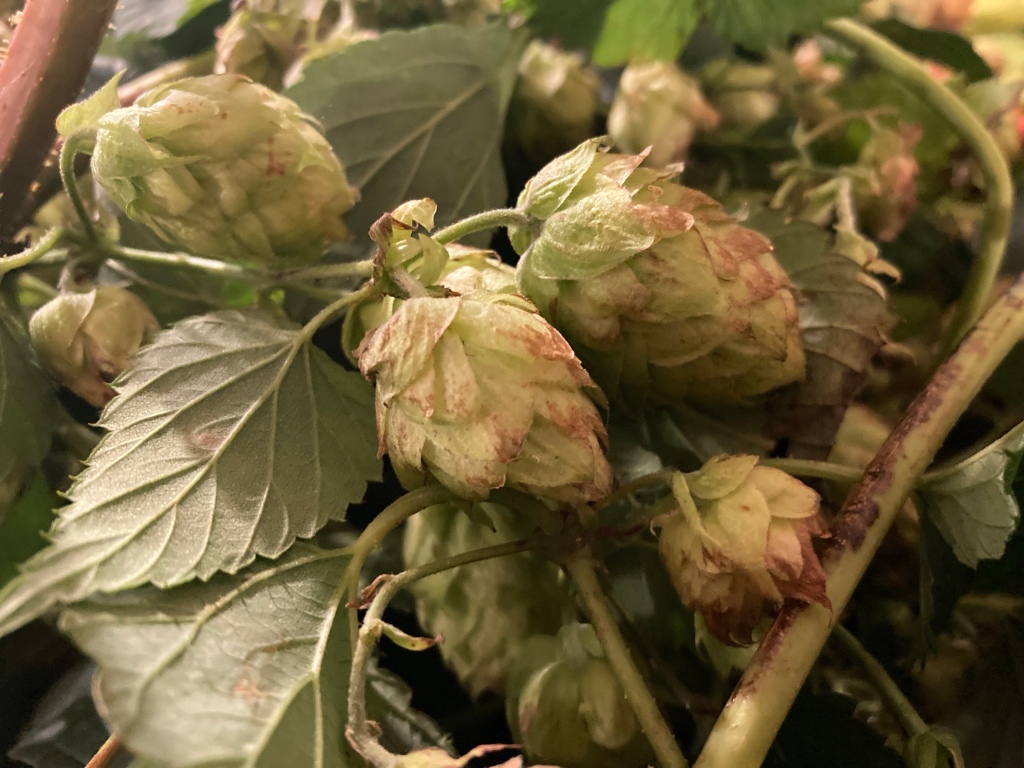
Future prospects
The species is, unlike most other butterflies, having a bit of a resurgence at the moment, with numbers on the increase and new sightings every year in parts of the country they were though to have become extinct in, in the last few years they have even spread into Scotland and the Isle of Man.
Their initial decline in the 1800s was thought to have reflected the decline in hop-growing across the country but their recent increase, since the 1960s, is thought to follow the increase in nettles, their larvae’s other food plant, due to increases in usage of fertilisers, as nettles prefer soils which are high in nitrates.
That a falling and rising trend in their numbers can be seen to follow changing trends in land use is not unique to the Comma, similar changes can be seen in the fates of other native species of British wildlife. This goes to show that our influences and management of the British countryside directly effects the wildlife living in it, but it also demonstrates the resilience and adaptability of that wildlife to evolve.
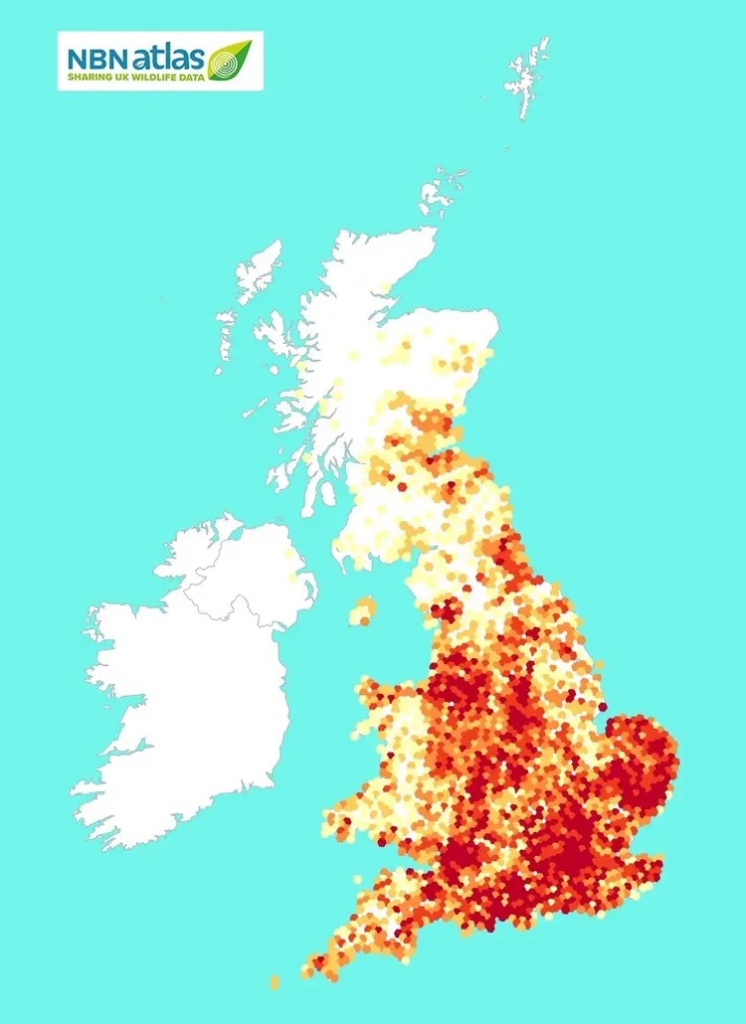
(NBN Atlas)
How we can help
Small changes can be made in the way we do things which can help butterflies like the comma enormously, simply planting a plant attractive to them, like a budleai, in the garden border, or leaving wildflowers to bloom rather than weeding them out can help.
Farmers are also changing the way they do things, not spraying or cutting patches of nettles and thistles is often enough and leaving hedgerow margins to be cut later in the year after flowers have bloomed is another small change that can be made. Countryside which is alive and thriving with butterflies and other insects is more pleasant to work in after all and as they are pollinators will be more productive too!
The butterfly obtains
by Emily Dickinson
The butterfly obtains
But little sympathy
Though favorably mentioned
In Entomology
Because he travels freely
And wears a proper coat
The circumspect are certain
That he is dissolute
Had he the homely scutcheon
Of modest Industry
‘Twere fitter certifying
For Immortality
A B-H